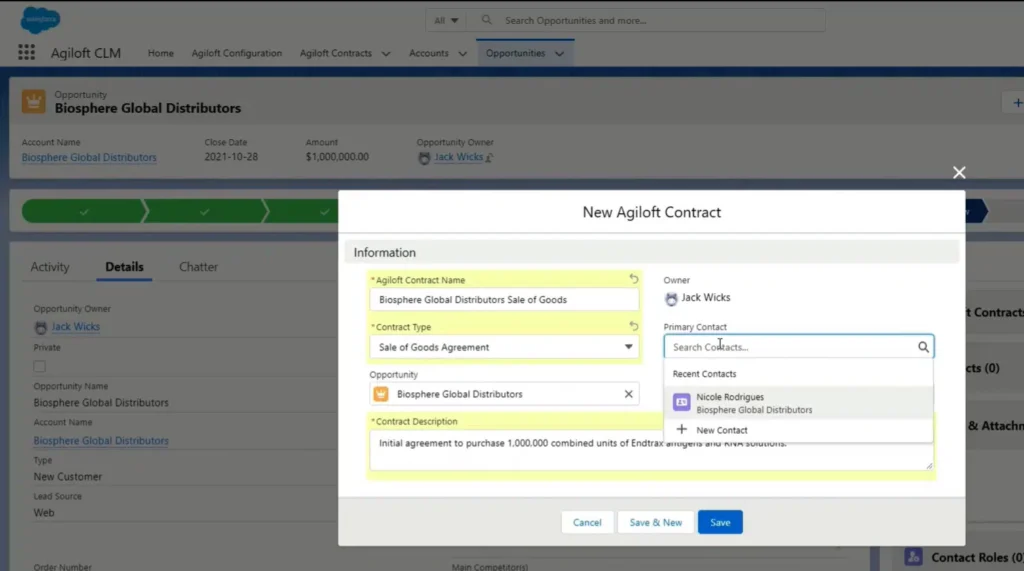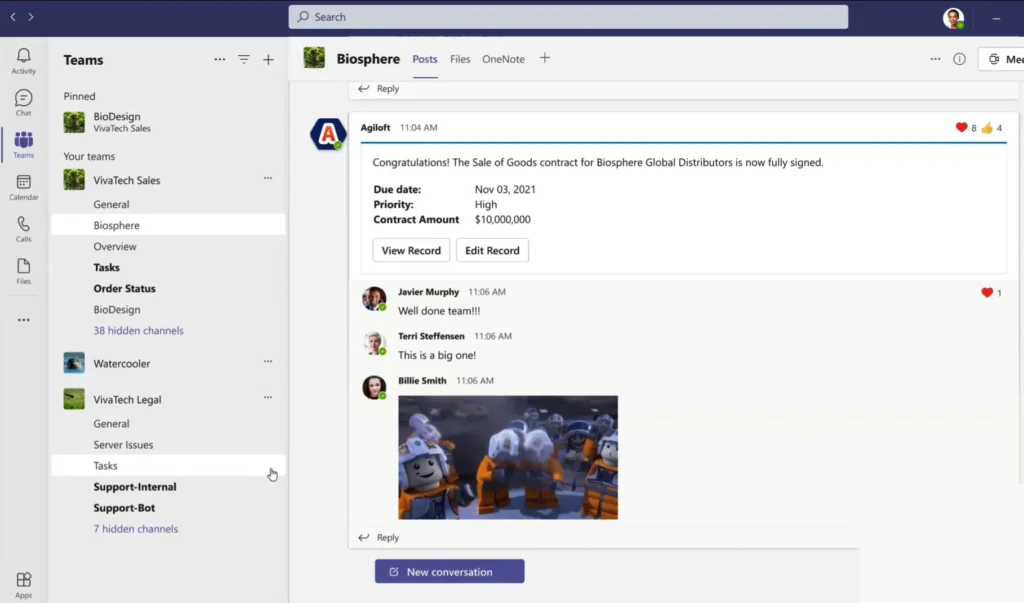
6 Shortcuts to Sync Sales and CLM
When sales contracts are hitting bottlenecks and you lose sight of documents as they move around, your CLM process is broken.

When revenue generation stalls due to inefficiency, when sales contracts are hitting bottlenecks, when you lose sight of documents as they move between teams, your contract lifecycle management (CLM) process is broken. In addition, many organizations are facing the disruption of the traditional sales model as customers become more distributed with remote work. These challenges require new tools to help sales teams close deals without distraction.
Basic contract management principles and an agile contract management platform designed around sales can finally resolve these pain points and even accelerate revenue recognition.
In a recent webinar hosted by Paul Branch, Chief Networking Officer at World Commerce and Contracting, Brittany Lees, Business Systems Architect at Health Catalyst (a leading provider of data and analytics technology for healthcare organizations) discussed the successful integration of Agiloft CLM and Salesforce and how it fit within the larger Health Catalyst ecosystem.
The top reason companies implement CLM solutions for Sales
At the onset of the webinar, the hosts polled participants, finding that 60% have (or want to) integrate CLM for sales to achieve better efficiency between their sales and legal teams, followed by better visibility and business insights.
With the integration of a best-in-class CLM software, you can remove bottlenecks, allowing for sales to focus their attention on what matters: client engagement and boosting sales revenue. Agiloft’s flexible CLM platform offers streamlined workflows, automated tasks, and real-time integration with CRMs (like Salesforce), thereby shortening sales cycles and adding value across the organization.
1. Increase velocity with sales-friendly contract templates
A top CLM solution helps teams establish pre-approved contract templates for a single source of truth using historical contract data, new legal learnings on clause language, or incorporating new contract terms based on market changes. The result is an increase in the accuracy of template development—to generate consolidated, standardized agreements. This minimizes variability in sales contracts, reduces risk of the deal going sideways, and accelerates the approval cycle.
The result is that the sales team can start closing deals faster and the customers experience a smooth contracting experience—something any sales team can get behind.
2. Quick answers for customers with centralized control center
A top CLM platform includes a centralized command and control center, streamlining communications related to document workflows. With cloud capabilities, you can check the dashboard and view the status of a document anytime, anywhere.
Furthermore, with an established review and approval workflow, and e-sign capabilities, you can have an owner designated for each point in the process from creation to approval, inclusive of automated notifications. This standardizes the signing process and then pushes the contract to Salesforce for real-time universal access.
3. Bye-bye bottlenecks – blast through with just-in-time visibility
While the centralized communication hub shows the lifecycle of the contract and selling documents, the activity dashboard offers data points and contract analysis for an important level of visibility across teams.
With sales teams on the go, tracking hundreds of potential and established customer relationships, the transparency offered by a centralized dashboard helps forecast when a deal is going to close and the hurdles standing in the way. By pulling pipeline reports, contract renewal data, and reviewing your contract tracker, the team always knows a deal’s status. This high-level transparency and contract management reporting identifies the bottlenecks and offers the opportunity to engage the best strategic partner to help move the process along.
4. Integrated system intelligence to drive strategy for the busy sales team

Does your CRM speak to your contract management system? Can you stay within the program you know and trust, while getting real-time updates from other sources of data? CLM for sales is successful when at each step within Salesforce something is happening within Agiloft CLM that is complementing that activity. Tableau can then report on Salesforce, Agiloft CLM and Workday metrics to provide a 360 view of the pipeline, which will create a portfolio of data that can show trends to drive business strategy.
In a recent update, Agiloft has partnered with Microsoft Teams and Word to further elevate the potential for CLMs to communicate within the tech ecosystem. Salespeople can approve contracts with one click and receive critical updates and notifications directly from Teams with this new functionality. By offering the opportunity to complete tasks within Teams, this partnership is putting salespeople’s time first and prioritizing their ability to increase velocity.

A robust CLM like Agiloft will work to maximize efficiency, improve visibility, reduce cycle times, improve negotiations, and empower the business through connecting disparate programs in one familiar interface.
5. A smart CLM will keep your current customers (and revenue) coming back
An agile CLM will not just accelerate the sales cycle for new customers, it also supports your retention of the existing customers. Automation of renewal deadlines and greater insight into the workflow shows where a customer may be reconsidering their contract. This information at your fingertips allows for initiative-taking customer engagement, increasing the likelihood of contract renewal.
Minimize revenue leakage by allowing CLM systems to help keep track of performance obligations, contract end-dates and renewals as well as ensure accurate invoicing and recommend actions to maximize revenue.
6. Make sure your stakeholders know what is at stake
If you are currently considering a CLM solution, it is important that all your stakeholders understand how a CLM can serve the entire enterprise. The right CLM partner will join the process long before deployment. They will assist in outlining the steps starting with engaging the right stakeholders.
With expert knowledge on how the CLM can serve across teams, the best CLM solution providers will partner with you to help clarify the benefits for key players like your General Counsel, Chief Financial Officer, Chief Customer Officer, and leaders in Sales and Marketing.
In partnership with IT, your CLM provider can help you engineer the end-to-end contract lifecycle with respect to your unique contract types. With all the stakeholders around the table, you not only elevate the sophistication of the platform, but you also minimize the trouble-shooting phase post-implementation. The result is an easy-to-use solution that serves everyone and encourages enterprise-wise adoption.
Schedule your custom demo today!
Agiloft is the global leader in contract lifecycle management software. With its capability to improve contract management services for sales, procurement, sourcing, and legal teams, Agiloft’s development of a robust CLM software platform alleviates inefficiencies and maximizes access to real time information that guarantees optimum performance within the enterprise.
Recent
Posts
Cloud-based Contract Management Saas manages the entire organization’s contract creation, negotiation, signature, renewal, and more.
Contract management software offers a unified platform for creating, editing, tracking, and renewing contracts.
Learn from the co-hosts of the "Contract Heroes" podcast how contracting professionals drive revenue and reduce risk with CLM software.





